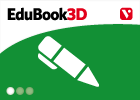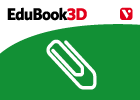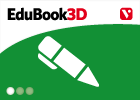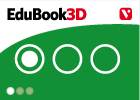Cargando...
Recursos educativos
-
Nivel educativo
-
Competencias
-
Tipología
-
Idioma
-
Tipo de medio
-
Tipo de actividad
-
Destinatarios
-
Tipo de audiencia
-
Creador
Lo más buscado
- Geografía de España
- Juegos de tablas de multiplicar
- Huerto escolar
- Experimentos con globos
- Aprender inglés
- Múltiplos de 7
- juegos matemáticas
- El método científico
- Experimentos de ciencias
- Conocimiento del medio natural, social y cultural
- O aberta O tancada
- ortografía interactiva
- Conjugador de verbos en gallego
- Siglo XVIII
- Civilizaciones de la antigüedad
-

Look. Parts of the human body
EduBook Organización
- 1813 visitas
Look at the cells in the box. They come from different parts of the human body. How are they different from each other? What do they have in common?
-

Look and answer. Sex cells
EduBook Organización
- 1806 visitas
In diagram 1, an ovum and a sperm are represented on the same scale. In diagram 2, the sperm has been magnified. How many times bigger is the ovum than the sperm in diagram 1? How big would the ova be…
-

Initial evaluation 02 - Animal reproduction
EduBook Organización
- 1814 visitas
Match each definition with the concept it refers to: : an animal that has both ovaries and testicles. : it happens outside the body of the female. : it happens inside the body of the female. : it…
-

Learn. Observe the parts of a flower
EduBook Organización
- 1803 visitas
What do we need? A flower A magnifying glass Tweezers Coloured pencils What do we do? Write down the name of the plant you are going to observe. Look at the sepals that make up the calyx. They are…
-

Final evaluation 01 - Plant reproduction
EduBook Organización
- 1807 visitas
Describe the structure of a flower and name all the parts. Say which are the male and female reproductive organs.
-

Investiga. La peste
EduBook Organización
- 1812 visitas
Busca información sobre la peste. Explica en qué consistió y averigua en qué año se produjo la primera epidemia.
-

La clasificación de los seres vivos
EduBook Organización
- 1806 visitas
En nuestro planeta hay millones de seres vivos diferentes. Para que podamos conocerlos y estudiarlos, es necesario que los clasifiquemos, es decir, que los repartamos en grupos, de manera que los…
-

Evaluación final T13 01 - La reproducción de los animales
EduBook Organización
- 1808 visitas
¿Qué es la fecundación? ¿En qué tipo de reproducción se produce?
-

Autoevaluación T16 05 - La energía
EduBook Organización
- 1807 visitas
¿Cómo se llaman las centrales que utilizan el agua embalsada para producir electricidad?
-

Evaluación final T06 10 - La época de los descubrimientos
EduBook Organización
- 1807 visitas
¿Qué representaron en sus obras los artistas del Renacimiento?
Te estamos redirigiendo a la ficha del libro...













